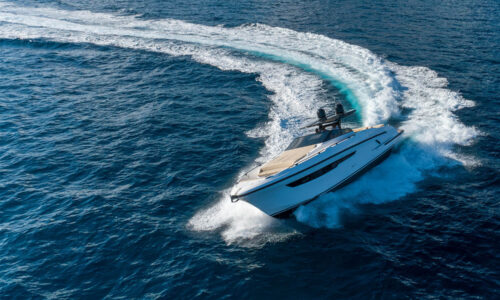PFDs – Types of PFDs
Boaters should know the different types of PFDs (Personal Flotation Devices) and how they’re used.
Wearable and Throwable PFDs
Wearable PFDs include life jackets and buoyancy aids.
- Life Jackets: These are made to turn an unconscious person face up in the water.
- Buoyancy Aids: These help keep you floating but you need to move a certain way to stay face up. If you’re unconscious, you might end up face down in the water.
A wearable PFD is something you wear or attach to yourself. If a PFD is labeled as Type I, Type II, Type III, or Type V (with Type I, II, or III performance), it’s a wearable PFD.

A throwable PFD is made to be tossed to someone in the water. If a PFD is labeled as Type IV, it’s a throwable one. These often look like seat cushions or rings that are approved by the USCG (United States Coast Guard). It’s a good idea to attach a throw bag or a floating rope to the throwable PFD. This makes it easier to rescue someone and helps you pull the device back in.

PFD Labels
New Combined Rating Standard for US & Canada
On the labels of new PFDs, you’ll see three types of symbols:
Performance Rating Symbols – You’ll see the numbers 50, 70, 100, or 150 with a picture next to them. These numbers show how buoyant the PFD is. The bigger the number, the more it helps you float.
- 50 & 70-rated PFDs are intended for calm waters, near shore, and have less buoyancy.
- 100-rated PFDs are intended for near-shore and have more buoyancy than level 50 and 70.
- 150-rated PFDs are intended for offshore with the most buoyancy.

Turning Performance Icons – On new PFDs, you might see a symbol that looks like a curved arrow or a half-circle. This symbol means the PFD can turn a person face up in the water without needing to move or swim.

Non-intended Use Icons – These icons show activities for which the PFD should not be used. If you see icons of different water activities with lines through them, it means that this particular PFD is not suitable for those activities.

Old U.S. Coast Guard Standard
Older PFDs (Personal Flotation Devices) come in five types, each designed for different situations:
- Type I PFD: Off-Shore Life Jackets – These offer the most help with floating and are best for open, rough, or far-off waters where help might take a while to arrive. They’re made to turn an unconscious person face up in the water. Adult sizes give at least 22 pounds of buoyancy, and child sizes give at least 11 pounds.
- Type II PFD: Near-Shore Vests – These are for calm, inland waters. They turn most unconscious people face up, but it’s not guaranteed.
- Type III PFD: Flotation Aids – Good for general boating or specific water activities, these are comfy to wear for a long time. They won’t turn an unconscious person face up in the water. The wearer needs to move to float face up.
- Type IV PFD: Throwable Devices – These are meant to be thrown to someone in the water during a man-overboard situation.
- Type V PFD: Special-Use Devices – These are for specific activities or conditions. The wearer needs to follow certain instructions to make sure they work right.
Choose a PFD that is USCG-approved, of the type recommended for its intended use, and fits the person who will be wearing it. Boating law requires each person aboard to have one wearable PFD that is readily accessible.
